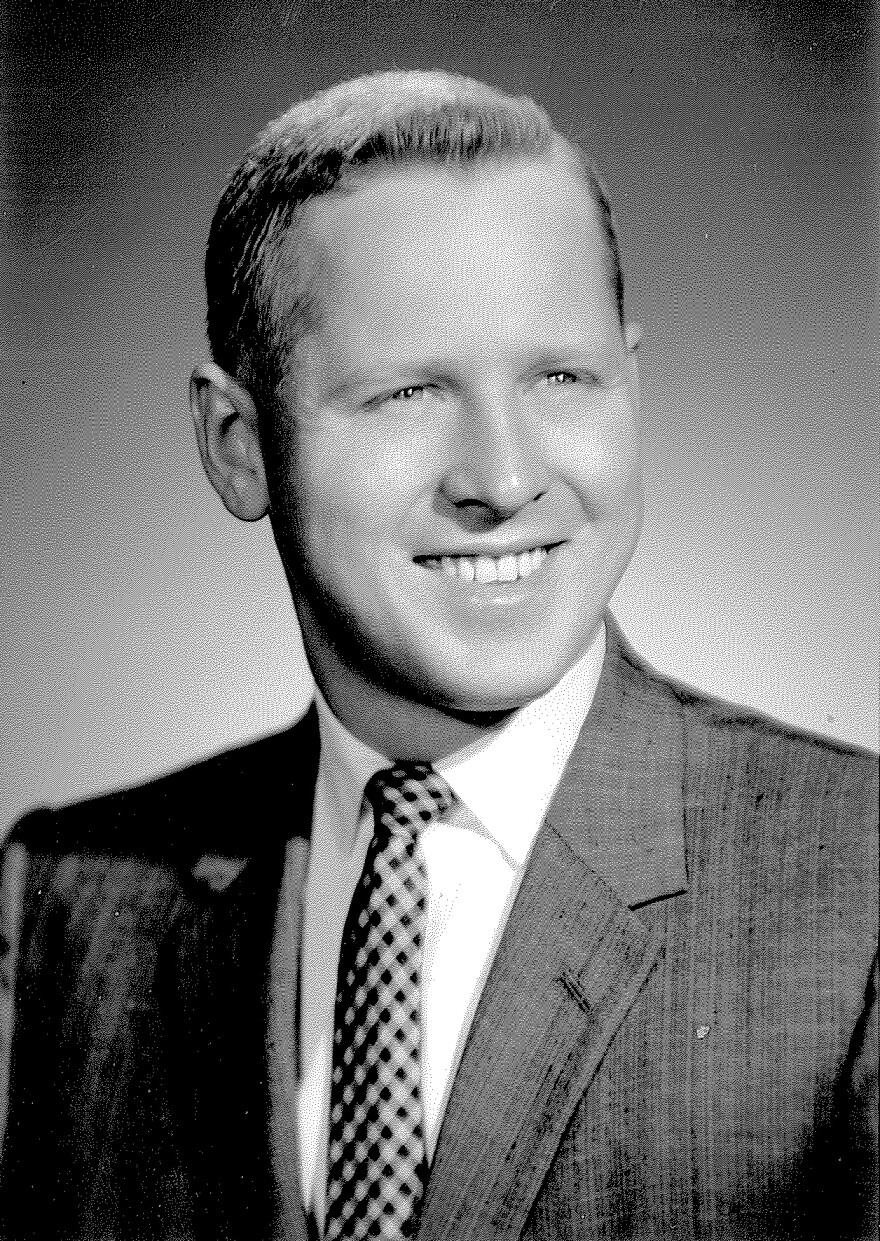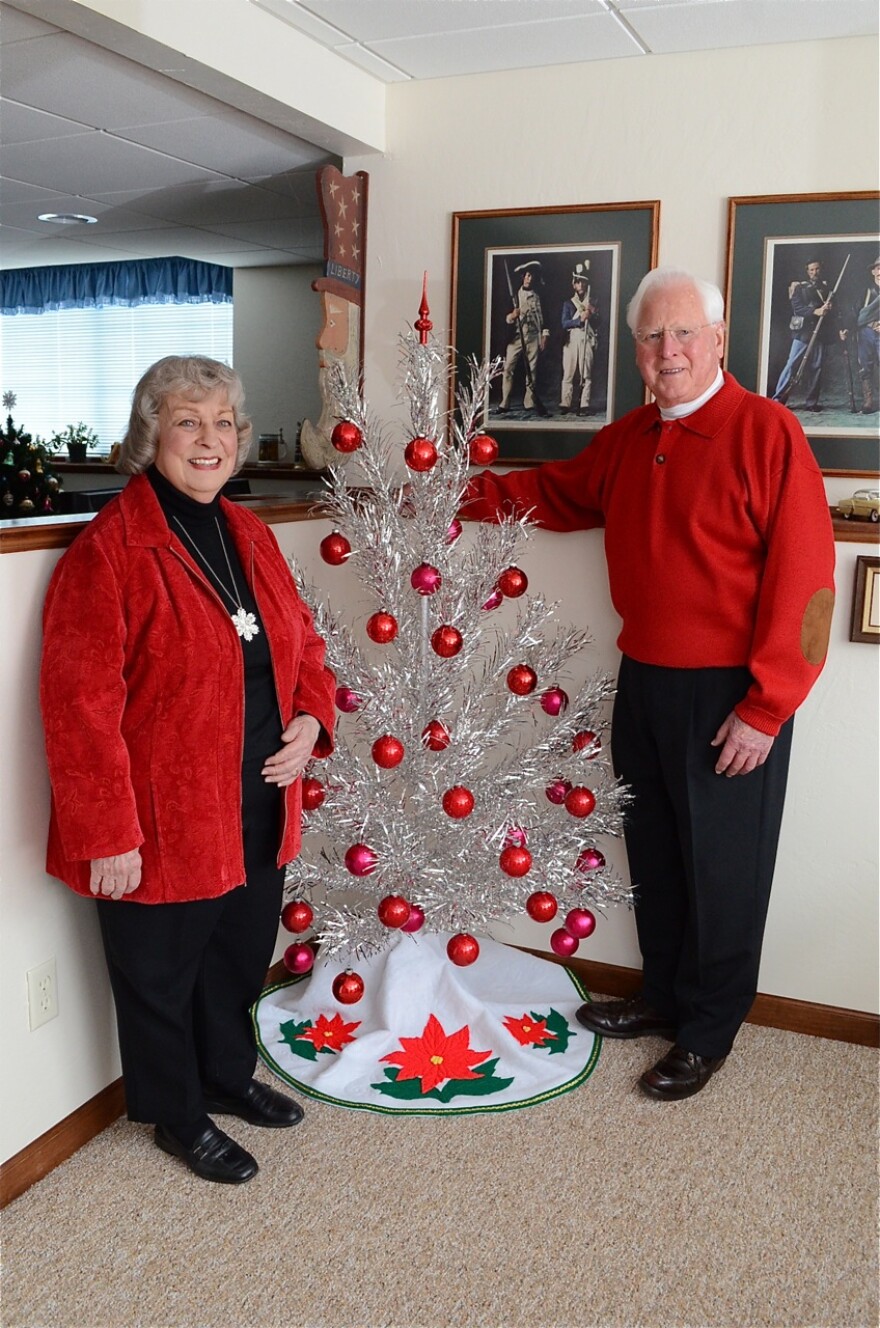Evergleam aluminum Christmas trees were all the rage in the early 1960s. The Manitowoc-made trees were anything but natural - artsy, space-aged, jaw-dropping. Today, the trees are seeing a rise in popularity - they’re alive at an exhibit at the Wisconsin Historical Museum and are hot on eBay.Curator Joseph Kapler’s eyes gleam with pride as he looks at the centerpiece of the exhibit, a rare, pink Evergleam Christmas Tree. Some fetch prices as high as $1,800. Fewer pink trees were manufactured and became coveted thanks to a certain 1965 animated TV special.
“This is the tree that Lucy referenced in the Charlie Brown special; she wanted to get an aluminum tree, perhaps painted pink,” Kapler says.
But the pink tree of Lucy’s dreams is only one of nearly two dozen Evergleams on display at the Madison museum.

“Everything here that we’re looking at we would collect and preserve; just like we do widgets and gadgets. wedding dresses and archival collections and furniture. This because it’s a Wisconsin product. All these were made in Manitowoc, Wisconsin,” he says.
Aluminum Specialties became the largest manufacturer of the trees; and at its peak – employed 750 people to make Christmas trees that evolved over time.
"They started out as straight needle and they added the pompom tips and then they did things like frosting the needles – basically crimping aluminum chaff,” Kapler says.
He calls his collection of 22 trees a forest. While the gallery’s north wall is lined with Evergleams, “forest” seems a bit puffed up. But, Kapler says, compare it to his first show, eight years ago.
“We worked hard to get seven trees and we had some lent as well,” Kapler says.
http://www.youtube.com/watch?v=tRx0bm177_I
He uses what he’s got to maximum effect through lighting. It seems to be working on a mother and her young daughter. They plunk down on the floor and gaze tree-ward – seemingly mesmerized. According to Kapler, during the 60s, the aluminum tree evoked strong reactions – from distaste to delight. But he says the manufacturer did not set out to replace the traditional “live” Christmas tree.
“The idea is you didn’t hang ornaments on these trees; you splashed light on them. They were so very different,” Kapler says.

David Moore has his own memories of an Evergleam his parents owned when he grew up in Minnesota.
“It’s kind of like the ones on the floor here but a little bit bigger. But not only that, but the tree stand like the one displayed, it turned and it was gold and it played music at the same time,” Moore says.
Although he says the tree stood regally in their living room window - unlike curator Joseph Kapler’s depiction – Moore and his brother were allowed to decorate their Evergleam.
“We didn’t have the glass balls because they were afraid of me knocking them off as a kid – or me and my brother – so we went with a plastic blue ball and once and a while we did popcorn on a string or paper chains,” he says.

Evergleams are fetching hefty prices these days on eBay. That could not have been said for the Moore family tree. He says he and his brother wore it out. Curator Joseph Kapler points out enclosed cases of surviving Evergleam artifacts. As much as the trees themselves, he covets their accessories and above all its packaging.
Jerry Waak vividly remembers the evolution of Evergleam. He was a regional salesman and later VP of marketing and sales for Aluminum Specialties.

“The company Aluminum Specialties always had Christmas parties for two customers – Montgomery Ward and Ben Franklin stores in Chicago. And the Christmas decoration buyer said to my boss, I’ve got to show you something,” Waak says.
It was a large beautiful aluminum Christmas tree that came in a big box - like the bulky one on display at the Wisconsin Historical Museum.
“But it was very, very high priced – the four foot tree was $75; six foot was $100. This was 1958 and that was a lot of money,” Waak says.
The buyer challenged Aluminum Specialties to get the price down and get it into a box that we put a display in our stores, customers can look at it, pick up a box and take it home. So this was two weeks before Christmas,” Waak says.
He says their engineering team set to work and three months later had come up with four trees.
“Exactly what the buyer wanted and we took it to New York for the toy show. The first person I worked with was from Minneapolis, and it was a woman buyer and she loved it,” Waak says.

She placed an order on the spot – and not a conservative one. “And I’ll tell you, at that time, with our toy line where we were selling and item for $1 or $2 or $3; a $25,000 order was big,” he adds. Her order was for $50,000.

Waak says over the next several years, the Aluminum Specialites plant was pumping out Evergleams 24/7, ten months of the year. And in fact, the tree “lived” on the market for thirteen years.
Joseph Kapler says the Wisconsin Historical Society intends to hold on to what remains, as many Evergleams as its pocketbook will allow, along with family photos around their aluminum tree and in store windows that people like Gerry Wook were responsible for.
”One of the marketing innovations that Jerry Wook and others had was finding new and different places to retail these," Kapler says. "And, one of the ideas they thought of in the 1960s was automotive supply stores; and a lot of them are located in the downtown central business districts. Well in December, there’s not a lot of need for tires; so they convinced a lot of these retailers to sell Evergleams, put these up and give people a reason to come in. So it’s great sales thinking along with great product development thinking."
That way of thinking is still paying dividends, a half century later.
Editor's note: Early in the story you heard a bit of I'm Dreaming of a White Christmas sun by The Nefrons ; and the final tune was sung by the Capitol Chordsmen.






